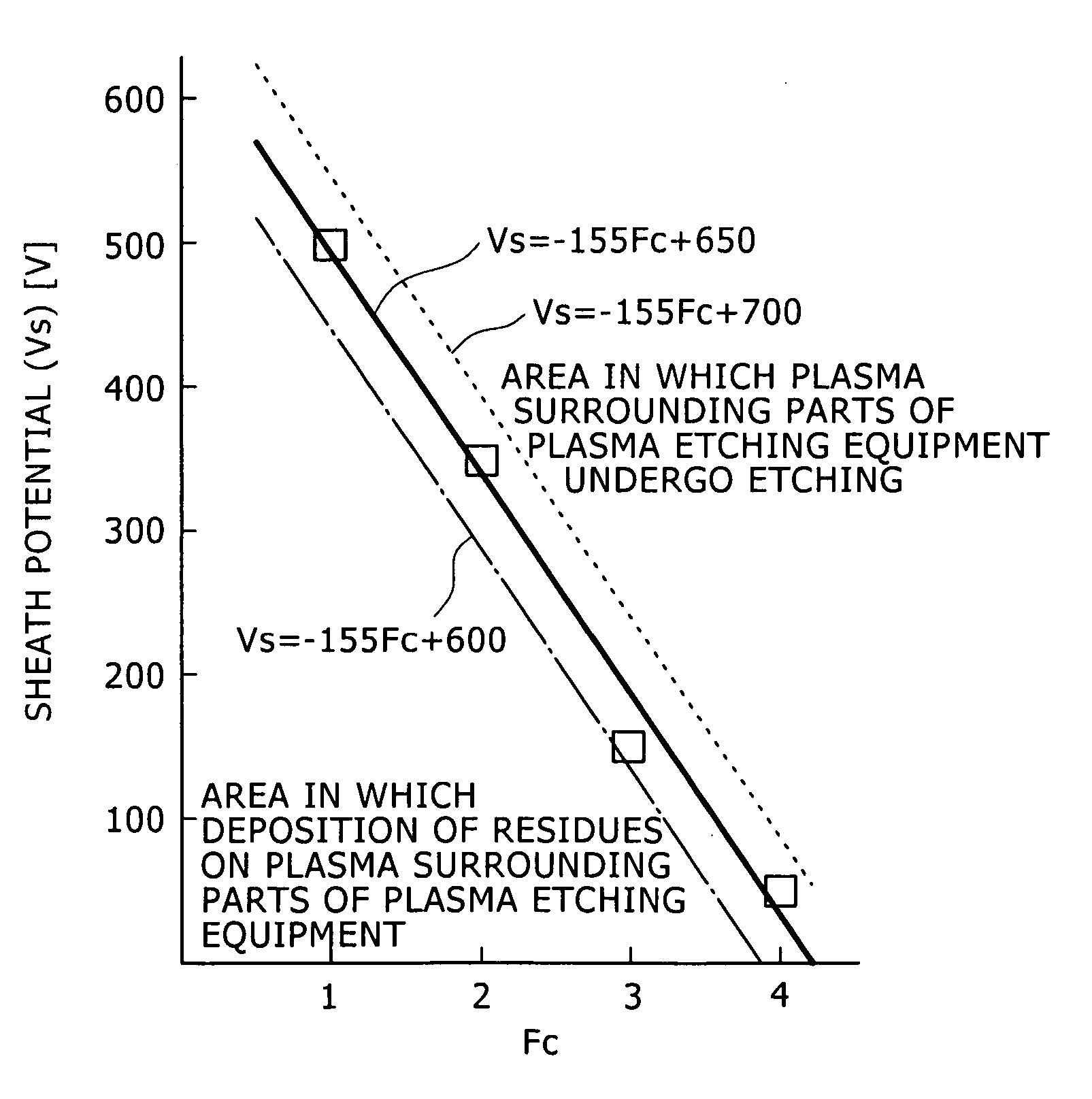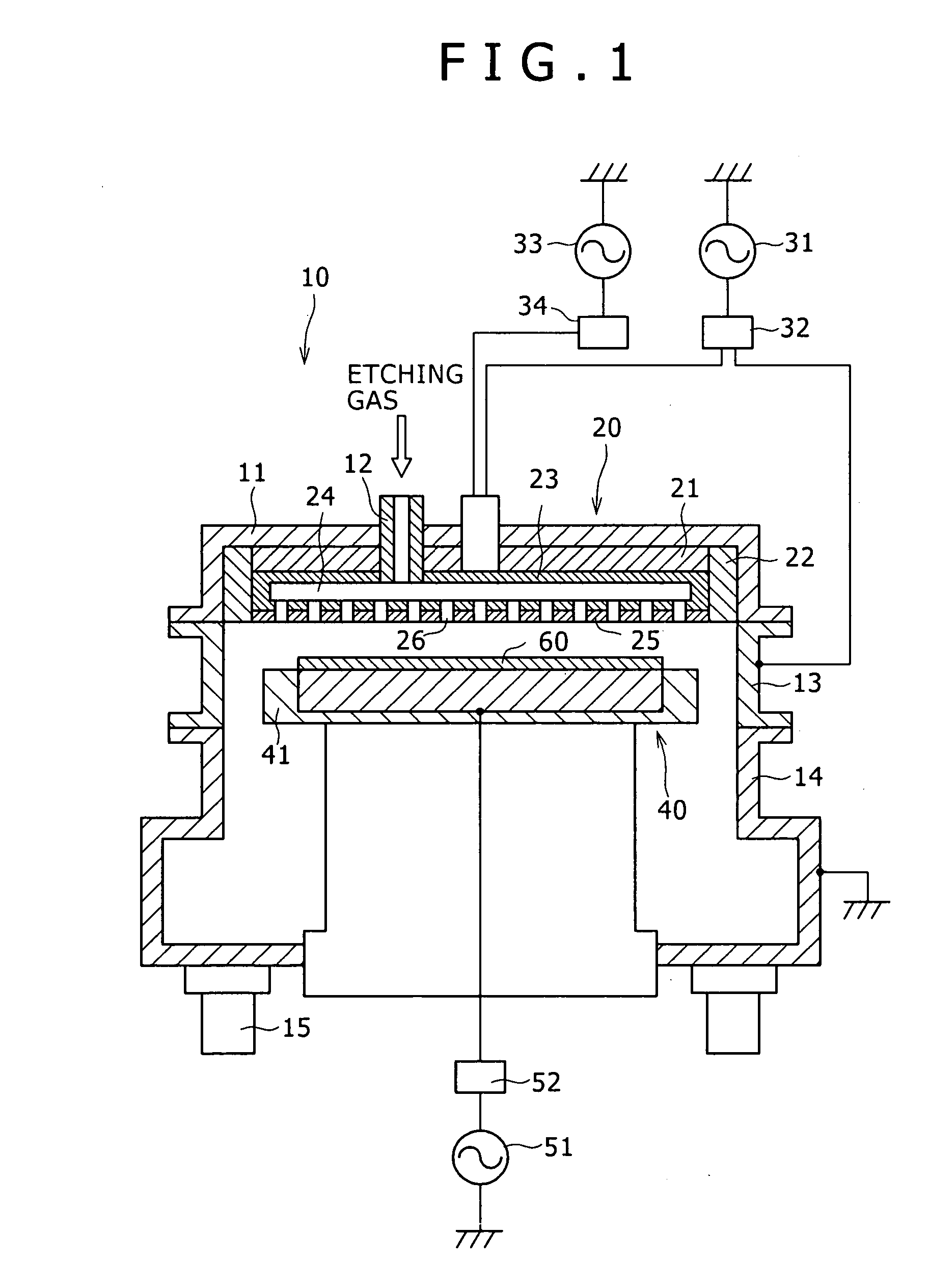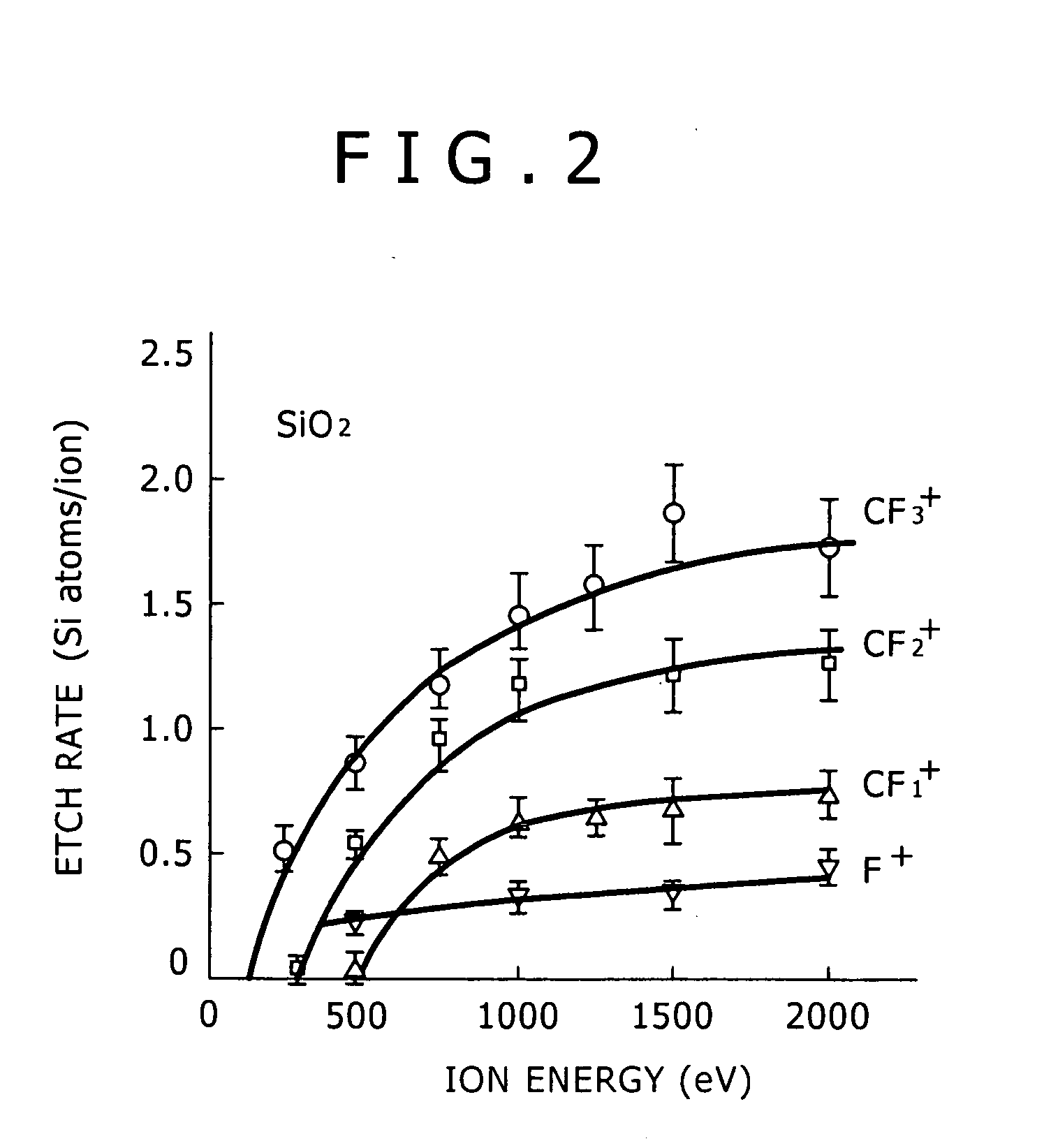Plasma etching method
a technology of plasma etching and plasma, which is applied in the direction of beds, beds, seating furniture, etc., can solve the problems of occurrence of residues, anomalous etch suspension, and serious troubles, and achieve stable plasma etching, stable continuous plasma etching, and prevent the deposition of residues
- Summary
- Abstract
- Description
- Claims
- Application Information
AI Technical Summary
Benefits of technology
Problems solved by technology
Method used
Image
Examples
example 1
[0039] This example demonstrates the plasma etching method according to a first embodiment of the present invention. Plasma etching in this example employs the parallel flat plate type plasma etching equipment as shown in FIG. 1 which is referred to as etching equipment 10 hereinafter. The etching equipment 10 has the upper electrode 20 arranged in its upper part and also has the lower electrode 40 arranged in its lower part. The upper and lower electrodes 20 and 40 are parallel and opposed to each other. The upper and lower electrodes 20 and 40 are supplied with high frequency power, so that an electric field is induced between them. This electric field generates a plasma which dissociates or ionizes the etching gas introduced into the etching equipment 10. The resulting particles move to the surface of the substrate, at which they bring about reaction for plasma etching on the insulating layer etc.
[0040] The upper electrode 20 includes the circular-plate-like conducting member 21...
example 2
[0059] This example demonstrates the plasma etching method according to a second embodiment of the present invention. Plasma etching in this example was performed by using the etching equipment 10 schematically shown in FIG. 1.
[0060] In Example 2, plasma etching was performed on two insulating layers, with the upper layer (the first layer) formed from SiO2 and the lower layer (the second layer) formed from SiOCH. The two insulating layers are regarded as the M-layered object for plasma etching (M=2 in this case). The etching gas is a fluorocarbon gas.
[0061] When plasma etching is performed on the mth layer, the sheath potential Vm-s, which appears on the outermost surface of the plasma surrounding parts, is controlled in response to the value of Fm-0 / Cm-0, where Cm-0 and Fm-0 denote respectively the number of carbon atoms and the number of fluorine atoms in the fluorocarbon gas used for plasma etching on the mth layer (m=1, 2, . . . M), so that no deposition of residues occurs on ...
example 3
[0068] This example is a modification of Example 2. In Example 3, plasma etching was performed on an object of three-layered structure to make openings for via holes. The upper layer (the first layer) is a masking layer formed from SiO2. The intermediate layer (the second layer) is an insulating layer formed from SiOCH. The lower layer (the third layer) is an etch stop layer formed from SiCN. The three-layered object for plasma etching substantially has M=2. There is a patterned resist layer on the mask layer formed from SiO2.
[0069] To be concrete, plasma etching was performed on the mask layer (the first layer) of SiO2 and the insulating layer (the second layer) of SiOCH under the conditions shown in Table 6 below. Plasma etching on the first and second layers was performed with the same fluorocarbon gas under the same conditions. In other words, both the sheath potential V1-s and the sheath potential V2-s were kept at the same value because the values of F1-0 / C1-0 and F2-0 / C2-0 a...
PUM
| Property | Measurement | Unit |
|---|---|---|
| thickness | aaaaa | aaaaa |
| relative permittivity | aaaaa | aaaaa |
| thickness | aaaaa | aaaaa |
Abstract
Description
Claims
Application Information
 Login to View More
Login to View More - R&D
- Intellectual Property
- Life Sciences
- Materials
- Tech Scout
- Unparalleled Data Quality
- Higher Quality Content
- 60% Fewer Hallucinations
Browse by: Latest US Patents, China's latest patents, Technical Efficacy Thesaurus, Application Domain, Technology Topic, Popular Technical Reports.
© 2025 PatSnap. All rights reserved.Legal|Privacy policy|Modern Slavery Act Transparency Statement|Sitemap|About US| Contact US: help@patsnap.com



